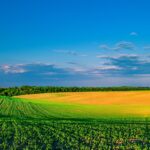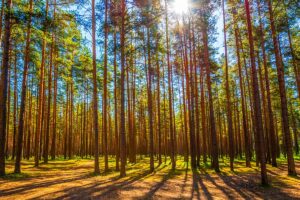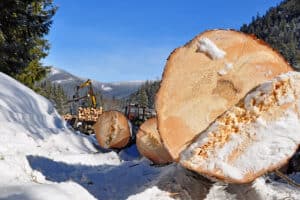With the recent run-up in row-crop farmland prices, savvy investors should be looking to similar investments that offer many of the same benefits of crop land ownership, without the hefty price tag. Timberland is just such an asset. In fact, timber is a crop. It just has a much longer production cycle. And here’s a secret…when you look at the asset classes held by the ultra-wealthy, almost without fail, you will see a heavy timberland flavor. Institutional investors, and high net worth individuals have already begun to take advantage of this opportunity. If you have not recognized this opportunity until now, it’s time to educate yourself on the benefits of timberland ownership.
Now I’ve mentioned the wealthy a couple of times here, but that does not mean you need 10 million dollars socked away to buy into a timberland asset. Those wealthy individuals had to start somewhere, and for the most part, they did not start out with millions to invest either. They started by making smart investments in assets that appreciated in value, or brought them income in some manner. Timberland will do both. It will work for the guy that can buy 40 acres, just like it will work for the investment group that owns 400 thousand acres. YOU have to start somewhere. As investors begin to substitute away from the higher priced good (Crop Land), the substitute good (Timberland) will appreciate in value. There’s no magic formula or fuzzy math here, it’s straightforward, basic level economics. When the value of a good goes up, so does the value of substitute goods. Timberland is a good substitute for crop land.
Why Timberland and Why Now?
Real Estate is a tale of two markets right now. Everyone knows that the larger real estate market, like our total economy, is not doing well. However, farmland seems to be breaking new record highs on an almost daily basis. Many factors contribute to that. Some of it is scarcity, some of it is commodity prices, some of it is advancement in the productive capacity of good farmland, some of it is capital from non-farm sources flowing into the ag land economy, and some of it is pure speculation.
Let’s focus on the last two, as these are the factors that are driving prices the most in the current market. Speculation. There’s a bad word, isn’t it? I beg to differ. Speculation brings liquidity to markets the world over. Unless you can predict the future 100% correct all the time, every decision you make is a speculative one. Without this speculation many of our markets would swing more wildly than they already do. Speculation will help put a bottom sagging markets. Speculation in the commodities markets helps farmers plan their crops, and protect their investments. Speculation has a purpose in a free-market economy. Speculation can propagate itself to unsustainable levels, as we have witnessed in so many “bubbles” in the last decade. Speculation that is based on provable numbers, and time-tested data is a better bet than speculation in a market because everyone else is doing it. The cropland market has a fair amount of speculative value built into it right now. Yesterday is when you should have invested it cropland. If you are going to profit from the appreciation in an asset based on the forward momentum of speculation, the time to do that is before it’s all the rage. Timberland is positioned well to take advantage of this right now. As the cropland numbers push higher, more people will see the value in substituting timberland for cropland. More people will grow uneasy with the run-up in cropland values and substitute away from it. Get into timberland now, and benefit from this economic law.
There’s also much more capital in the agricultural economy today than is traditionally present. People that would not know which end of a cow to feed, or that peanuts grow in the ground now are owners of farmland. Many of these people have invested in the land factor of production because they are substituting away from investments in the stock market that they have deemed more risky. They simply hold the property for the rental income, appreciation, and hedging ability of the asset. They rely on a traditional farmer to actually produce from the land. Until recently, this was a very uneasy partnership between the big money, city-slicker and the farmer. With the maturation of our ag markets, and the sheer volume of capital available from urban investors, they have grown to appreciate each other a bit more than in the past. Many of these same dynamics are at play in the timberland market. More investors are realizing the income, appreciation, and hedging properties of the timberland investment. This market will soon develop in much the same fashion as the cropland market has in the past couple of years. Plus timberland can be more easily managed by someone who has not been a farmer all of their life, or even someone who lives in a downtown loft apartment. It’s a bit more forgiving to the newbie than is cropland and you have the opportunity to time your harvest to highs in the wood fiber markets instead of taking the going price at the end of the growing season. This puts the investor in the position of profiting from the production aspect of timberland…not just sitting back and collecting rents from someone else trying to work out a profit using the land too.
Why is Timberland a Good Investment Substitute for Cropland?
Timberland has all of the qualities that today’s investors are paying premiums to obtain in the cropland market (income, appreciation, hedging). Timberland has a lower capital requirement per unit of production than cropland. Timberland has not experienced the recent run-up in prices that cropland has. Timberland can be more easily managed, in a hands-on manner, by the novice than can cropland. You can do all of this with timberland and still obtain rents on the timberland from outdoorsmen who wish to hunt on the property…while you are growing your timber crop. The numbers you need to make speculative investment decisions are available, proven, and time-tested. No fuzzy math. Just good solid investment sense. Get yours before it’s all the rage. Then profit from a timberland investment once everybody’s doing it. Get ahead of the curve instead of behind it. Buy Low. Sell High.
This content may not be used or reproduced in any manner whatsoever, in part or in whole, without written permission of LANDTHINK. Use of this content without permission is a violation of federal copyright law. The articles, posts, comments, opinions and information provided by LANDTHINK are for informational and research purposes only and DOES NOT substitute or coincide with the advice of an attorney, accountant, real estate broker or any other licensed real estate professional. LANDTHINK strongly advises visitors and readers to seek their own professional guidance and advice related to buying, investing in or selling real estate.










Great article Robert. At our firm, land and timberland is all we deal in. We have seen the drastic effects on our timber market since Katrina put more timber on the ground in one day than was harvested in 5 years, and of course the housing industry bubble burst, has wreaked havoc on our industry.
It has been very encouraging to see that investors are now seeing the value in cropland and that more and more money has been invested in land. We have felt here in the southeast, as prices of rowcrop in the midwest continues to rise, that, eventually, investors would begin to look around for similar investments in the same market or as you put it, substitutes.
Investors should learn from this article, this is the same information we provide when describing the advantages of owning pine plantation as a crop. For the larger investor that will buy 1,000 acres or 10,000 acres, with this much acreage the ages of your pine plantation will vary which will provide you with the opportunity of continual cash flow through thinnings of different ages, harvesting mature timber, hunting leases, and the option of the value conservation easements may provide. We believe that pine plantation is the next crop investors will turn to and now is a great time.
Thanks for you comments, Kyle. I could not agree more.
If there is a negative connotation to “speculation”, it should be tied to the stock market – not a tangilbe that can preserve wealth with the ability to “grow” more money. Even though we have a more specific timber investment strategy, I couldn’t have written this any better – thank you for the post!